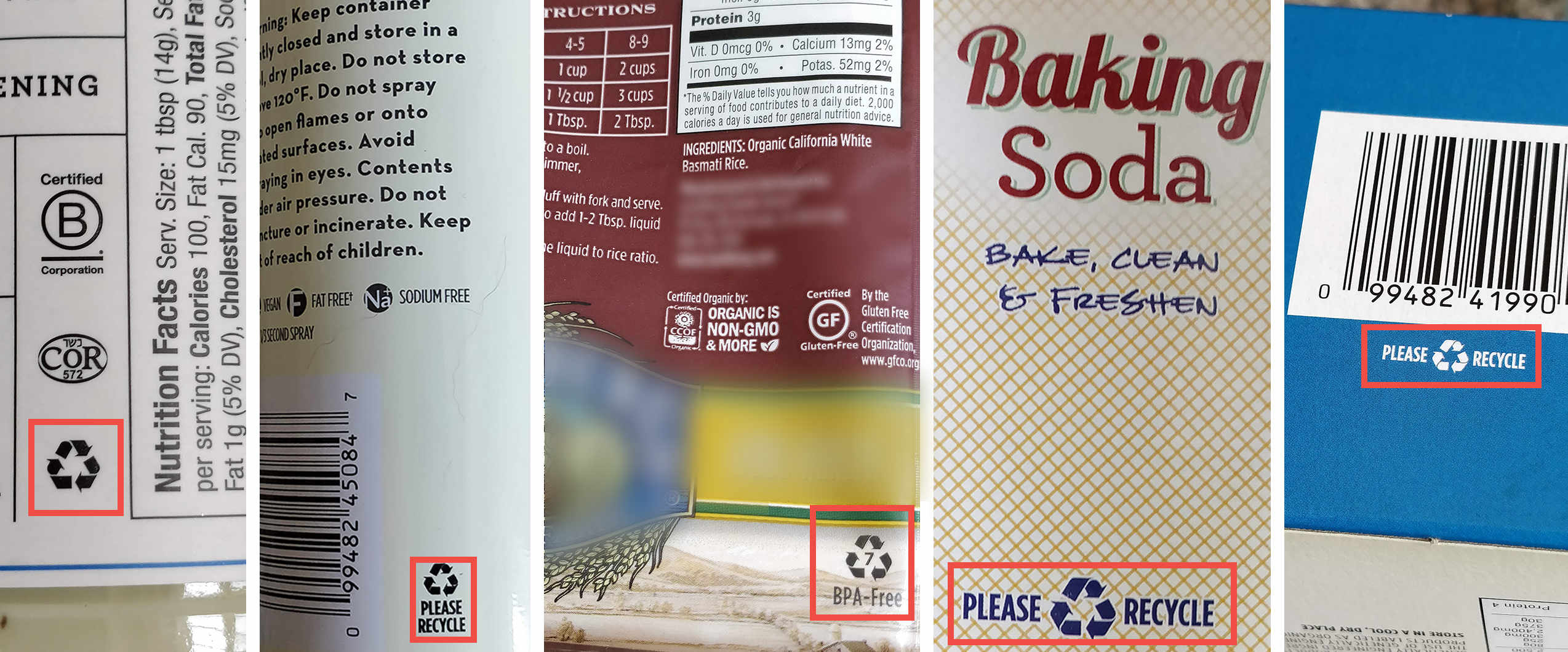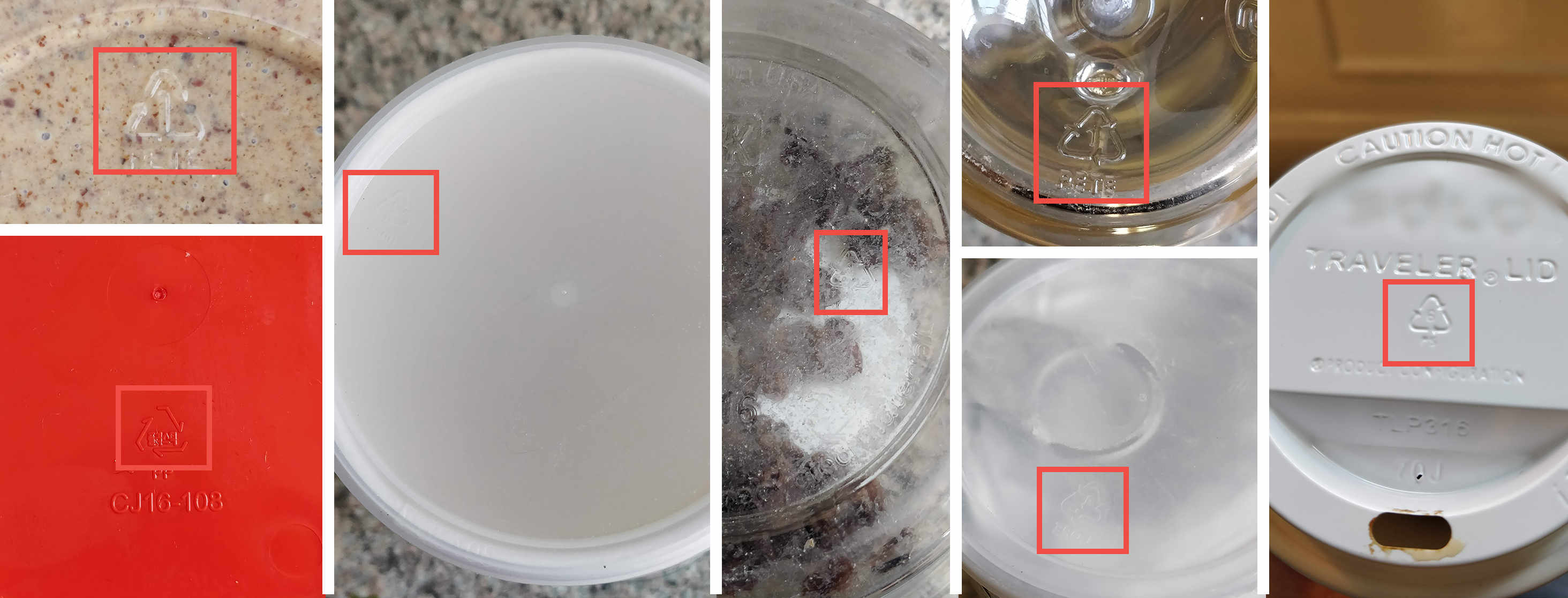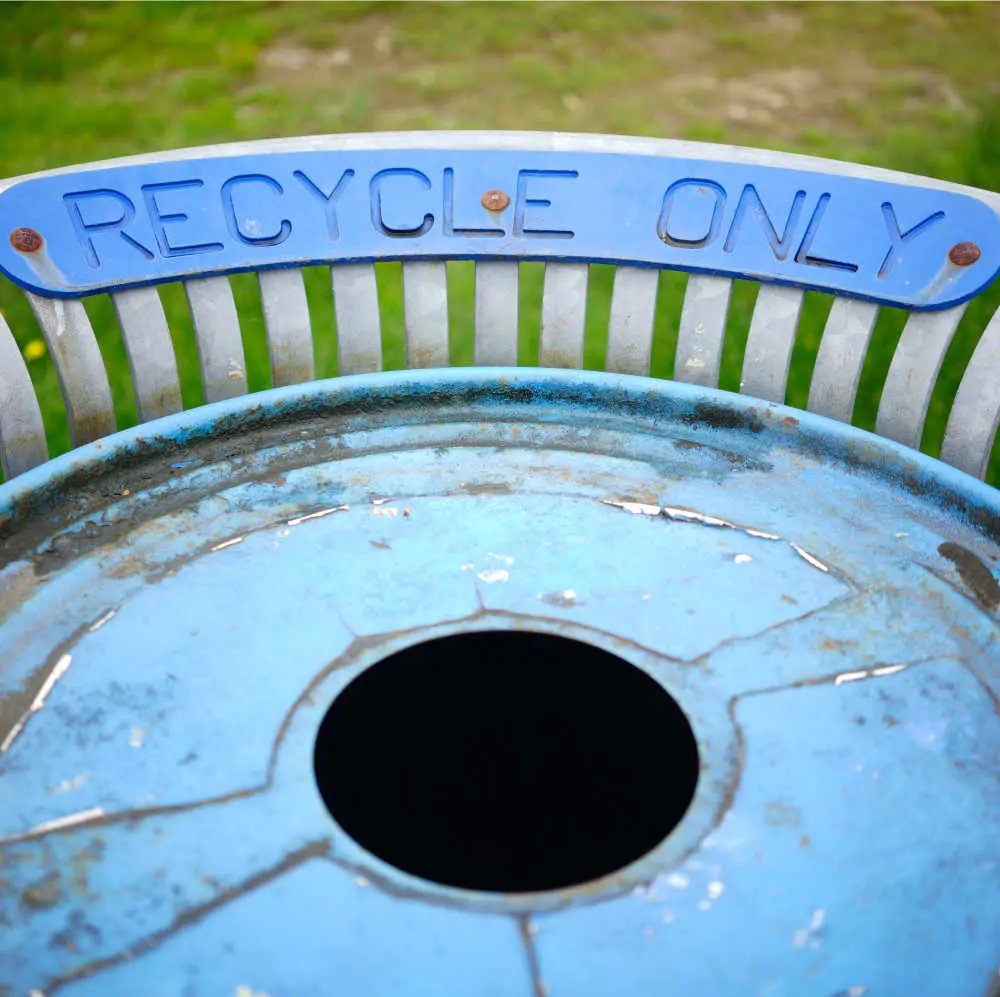Recycling seems to be under fire recently. Society is having trouble keeping up with the amount of waste we’re producing and where to put it.
Right now, many folks put a lot of blame on consumers for contributing to this issue, but is that fair? Current disposal methods are inconsistent, confusing, and almost impossible to follow.
To help illustrate, I set out to evaluate my own contributions, keeping in mind the question, “Am I recycling correctly?” I began pulling packages and containers out of my cabinet and fridge, flipping them over to find the elusive symbol. Surprisingly, nothing consistently communicated how to recycle — even items from the same product line. I’ve added a few photos below, categorizing them from most to least effective.
Trying but Unclear

The first group has instructions about how to dispose of the packaging, but it’s confusing. The tea carton (top right) is made out of recycled materials, but the information doesn’t explain how to dispose of it.
The middle package says “Recyclable only where facilities exist” and provides a website with more information. Great, it gives me a direct link to learn more. But what does “recyclable only where facilities exist” mean? Do I have to bring this package to a particular facility, or will my recycling pickup be adequate? And let’s be real, who’s gonna go to a computer every time they want to discard something?
Another package just says, “check with your local recycling program.” A+ for making it actionable, but how do I contact them? What would that conversation be like? “Hi, yes I’d like to throw my light brown sugar package away, is that something I bring to you or…?” Not perfect, but at least I can piece together a strategy for disposal.
Recyclable, but How?

This next bunch all indicate they can be recycled but aren’t clear on how. Let’s take a look at the cooking spray (second from the left). It says “please recycle,” but how am I supposed to do that? It technically contains a food product, which I can’t rinse out since it’s a sealed container. A Google search returns information on aerosol cans; I couldn’t find anything on cooking spray in particular. Apparently I need to press down on the top to entirely empty the contents before it goes into the recycle, otherwise it’s trash. If my local facility doesn’t take it, though, it just goes into the trash anyway.
The middle package has the #7 and the words “BPA free” printed underneath. The number refers to the type of plastic, which is helpful with sorting at the recycling plant. Seven means “miscellaneous” and is treated as a catch-all category, which can be a combination of any plastics from the previous six categories. A call to the local facility will tell me if it’s recyclable, otherwise, into the trash. Again, this category is recyclable but remains unclear about the extent.
Recyclable, Maybe

I’ve grouped this set together strictly based on the symbol illegibility. In addition to being unable to read the numbers, there’s no clarifying information about proper methods to recycle.
One thing I know is packages that contained food waste should almost always be rinsed out. This is impactful in two ways: first, it preps the container to be reused, making it easier for the plant to process; and second, it doesn’t contaminate other packaging. But, does everyone know this? How is this information being communicated, and is it effective? The almond butter jar (top left) absolutely needs to be rinsed out considering its consistency, but nowhere on the package is this explained.
Another frustrating thing is the coffee cup (right). Sure the lid is recyclable — but what about the cup? In most cases these cups use plastic or wax to line the inside, making them nearly impossible to recycle. Which makes them trash.
To top it off, these symbols are made of the same material as the package. Unless you have perfect eyesight, they are essentially invisible.
Your Guess is as Good as Mine

This set includes no recycling information. I thought I made a mistake. I kept twirling the packages, but nope, nothing. Some are easy-ish to assume (glass on the left and aluminum on the right), but that’s all it is, an assumption. Others such as glass bottles with oil, or packages with combinations of materials including cardboard and metal contain no information.
The plastic bag of nuts (second photo) is particularly frustrating. This is the exact same material as the one in an earlier section which says “call your local facility” but in this case, it includes no information.
So What Can We Do?
What I’ve shown above is a dysfunctional design system. One that is poorly implemented, and where the inconsistent information is likely contributing to our growing waste management issues, damaging the entire planet. Your question might be, “so what now; how do we improve?”
Through my research, I’ve found that there actually has been some brilliant work done on introducing a smarter, more user friendly system. One that displays how to prep the packaging, the material used, the method of recycling, how the different components separate and recycle differently, and a clear path to learn more. This is definitely a step in the right direction.
However, this is only half the battle. It’s surprising to me that I can shop at major grocery stores — many of which claim to provide healthy, local, and organic foods — yet they miss entirely on taking responsibility for the byproduct of what they sell.
If companies were more apt to adopt a clear system for recyclables, consumers would have stronger motivation to take responsibility for recycling. Empower users, results will follow.


